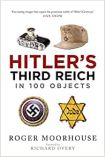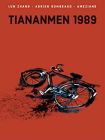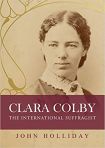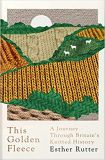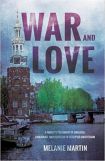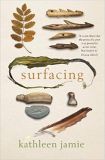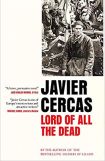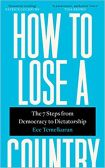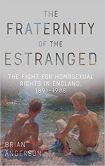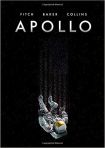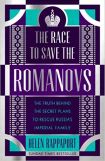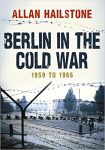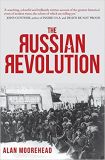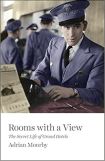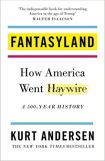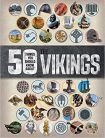Review ofThe Third Reich in 100 Objects: A Material History of Nazi Germany by Roger MoorhouseWhat is the first image that comes to mind when you think of the Third Reich? Hitler? A swastika? The Nazi salute? The gate to a concentration camp? None of these are comfortable images but they are emblematic of the Third Reich's fascist regime in all its iniquity. But some objects and images from that time may be less familiar to you. In this short volume, Roger Moorhouse has attempted to illustrate the period of the Third Reich through one hundred of its material artefacts. Full Review |
Review ofTiananmen 1989: Our Shattered Hopes by Lun Zhang, Adrien Gombeaud, Ameziane and Edward Gauvin (translator)I never really followed the events of Tiananmen Square with much attention when it was playing out – someone in the second half of their teens has other priorities, you know. I certainly didn't know of the weeks of protests and hunger strikes from the students before the massacre and the birth of the Tank Man image, I didn't know how the area had long been a venue for political protest, and I didn't know more than a spit about the people involved on either side. This book is practically flawless in giving a general browser's context for the whole season of protests back in 1989. Full Review |
Review ofClara Colby: The International Suffragist by John HollidayThe path of Clara Dorothy Bewick's life was probably determined when her family emigrated to the USA. At the time she was just three-years-old but because of some childhood ailment, she wasn't allowed to sail with her parents and three brothers. Instead, she remained with her grandparents, who doted on her and saw that she received a good education, both in and out of school. She was the only child in the household and her childhood was glorious. By contrast, her family had become pioneer farmers in the mid-west of the United States and life was hard, as Clara was to find out when she and her grandparents eventually went to join the family. Clara would only know her mother for a few months: she was married for fifteen years, had ten pregnancies, seven surviving children and died in childbirth not long after Clara arrived. As the eldest girl, a heavy burden would fall on Clara and Wisconsin was a rude awakening. Full Review |
Review ofThis Golden Fleece: A Journey Through Britain's Knitted History by Esther RutterIt was December and Esther Rutter was stuck in her office job, writing to people she'd never met and preparing spreadsheets. The job frustrated her and even her knitting did not soothe her mind. January was going to be a time for making changes and she decided that she would travel the length and breadth of the British Isles with occasional forays abroad, discovering and telling the story of wool's history and how it had made and changed the landscape. She'd grown up on a sheep farm in Suffolk - a free-range child on the farm - and learned to spin, knit and weave from her mother and her mother's friend. This was in her blood. Full Review |
Review ofRonnie and Hilda's Romance: Towards a New Life after World War II by Wendy WilliamsRonnie Williams was the son of Thomas Henry Williams (known as Harry) and Ethel Wall. There's some doubt as to whether or not they were ever married or even Harry's birthdate: he claimed to have been born in 1863, but he was already many years older than Ethel and he might well have shaved a few years off his age. For a while the family was quite well-to-do but disaster struck in the 1929 Depression and five-year-old Ronnie had to adjust to a very different lifestyle. One thing he did inherit from his father was his need to be well-turned-out and this would stay with him throughout his life. He joined the army at eighteen in 1942. Full Review |
|
|
War and Love: A family's testament of anguish, endurance and devotion in occupied Amsterdam by Melanie MartinMelanie Martin read about what happened to Dutch Jews in occupied Amsterdam during World War II and was entranced by what she discovered, particularly in The Diary of Ann Frank but then realised that her own family's stories were equally fascinating. A hundred and seven thousand Jews were deported from the city during the war years, but only five thousand survived and Martin could not understand how this could be allowed to happen in a country with liberal values who were resistant to German occupation. Most people believed that the occupation could never happen: even those who thought that the Germans might reach the city were convinced that they would soon be pushed back, that the Amsterdammers would never allow what happened to escalate in the way that it did, but initial protests melted away as the organisers became more circumspect. It's an atrocity on a vast scale but made up of tens of thousands of individual tragedies. Full Review |
|
|
Surfacing by Kathleen Jamie
Sometimes when people suggest that you read a certain book, they tell you this one has your name on it. Mostly we take them at their word, or not, but rarely do we ask them why they thought so unless it turns out that we didn't like the book. That's a rare experience. People who are sensitive to hearing a book calling your name, rarely get it wrong. In this case, I was told why. The blurb speaks of the author considering an older, less tethered sense of herself. Older. Less tethered. That's not a bad description of where I am. Add to that my love of the natural world, of those aspects of the poetic and lyrical that are about style not form, and substance most of all, about connection. Of course, this book had my name on it. It was written for me. It would have found its way to me eventually. I am pleased to have it fall onto my path so quickly. Full Review |
|
|
Lord Of All the Dead by Javier Cercas and Anne McLean (translator)Lord Of All the Dead is a journey to uncover the author's lost ancestor's life and death. Cercas is searching for the meaning behind his great uncle's death in the Spanish Civil War. Manuel Mena, Cercas' great uncle, is the figure who looms large over the book. He died relatively young whilst fighting for Francisco Franco's forces. Cercas ruminates on why his uncle fought for this dictator. The question at the centre of this book is whether it is possible for his great uncle to be a hero whilst having fought for the wrong side. Full Review |
|
|
How to Lose a Country: The 7 Steps from Democracy to Dictatorship by Ece Temelkuran
A little while ago a friend asked me if I thought that we were living through what in years to come would be discussed by A level history students when faced with the question Discuss the factors which led to... I agreed that she was right and wasn't certain whether it was a good or bad thing that we didn't know what all 'this' was leading to. I think now that I do know. We are in danger of losing democracy and whilst it's a flawed system I can't think of a better one, particularly as the 'benevolent dictator' is as rare as hen's teeth. Full Review |
|
|
The Fraternity of the Estranged: The Fight for Homosexual Rights in England, 1891-1908 by Brian AndersonOriginally passed in 1885, the law that had made homosexual relations a crime remained in place for 82 years. But during this time, restrictions on same-sex relationships did not go unchallenged. Between 1891 and 1908, three books on the nature of homosexuality appeared. They were written by two homosexual men: Edward Carpenter and John Addington Symonds, as well as the heterosexual Havelock Ellis. Exploring the margins of society and studying homosexuality was common on the European Continent, but barely talked about in the UK, so the publications of these men were hugely significant – contributing to the scientific understanding of homosexuality, and beginning the struggle for recognition and equality, leading to the milestone legalisation of same-sex relationships in 1967. Full Review |
|
|
Apollo by Matt Fitch, Chris Baker and Mike CollinsThis incredible graphic novel is a love letter to the Moon landings and the passion for the subject drips off every Apollo by Matt Fitch, Chris Baker and Mike Collins. This is a story we know well and because of this, the authors take a few narrative shortcuts knowing that we can fill in the blanks. These shortcuts are the only downside to the book. If you've ever read a comic book adaptation of a film you will be familiar with the slight feeling that there are scenes missing and that dialogue has been trimmed. This is a graphic novel that could easily have been three times as long and still felt too short. Full Review |
|
|
G Engleheart Pinxit 1805: A year in the life of George Engleheart by John WebleyGeorge Engleheart was one of the leading portrait miniaturists of Georgian London, with a career lasting from the 1770s to the Regency era. He was also one of the most prolific, painting nearly 5,000 miniatures altogether (over twenty of them being of King George III). Throughout most of that time he carefully recorded the names of each of his clients, and subsequently transcribed them into what is referred to as his fee book. Full Review |
|
|
The Race to Save the Romanovs: The Truth Behind the Secret Plans to Rescue Russia's Imperial Family by Helen RappaportThe basic facts about the deaths of Nicholas and Alexandra, some of which were deliberately obscured at the time for various reasons, have long since been established. For the last few months of their lives in Russia the former Tsar and Tsarina, their children and few remaining servants were held in increasingly squalid, humiliating captivity. To prevent them from being rescued, in July 1918 the revolutionary regime had them all shot and bayoneted to death in circumstances which, once the news was confirmed beyond all doubt, horrified their relatives in Europe. Full Review |
|
|
The Great Horizon: 50 Tales of Exploration by Jo WoolfJo Woolf has compiled a brilliant set of fifty short insights into the lives and achievements of some amazingly brave people. Their fearless journeys have helped us unlock many of the mysteries of the wildest parts of our world, and also given us an understanding of what it is like to be faced with the most terrible conditions and still have the determination and grit to carry on. This book could be viewed as a taster which encourages us to seek out and read more about some of the most iconic explorers. Their stories are pretty incredible and Woolf does them justice. Full Review |
|
|
Berlin in the Cold War: 1959 to 1966 by Allan HailstoneBerlin in the Cold War: 1959-1966 contains almost 200 photographs taken by author/photographer Allan Hailstone in his visits to the city during this period. The images provide an insight into the changing nature of the divide between East and West Berlin and a glimpse into life in the city during the Cold War. Full Review |
|
|
The Russian Revolution by Alan MooreheadThe author was writing from a slightly different stance from most other historians. Only a decade after the end of the Second World War, he was basing his account on the premise that the Nazis' rise to power in Germany was connected with the heritage that Lenin had left behind, and that without Stalin's assurances of support Hitler would never have dared to plunge the world into such a devastating global conflict. It was his belief that America's post-war commitments in Europe and the Far East, and other post-1945 developments, could also be traced back to the events of 1917. Much of his material came from German archives which were saved from destruction when the Third Reich was on the brink of collapse. These documents that the German government would have kept private had they won the war provided full detail on the attempts of their forebears to pave the way for chaos and revolution in their Asiatic neighbour.Full Review |
|
|
Rooms with a View: The Secret Life of Great Hotels by Adrian MourbyAdrian Mourby has given us a flying visit to each of fifty grand hotels, from fourteen regions of the world, with the hotels in each section being arranged chronologically rather than by region, which helps to give something of an overall picture. So what makes a hotel 'grand'? The first hotel to call itself 'grand' was in Covent Garden in 1774 and it ushered in the beginning of a period when a hotel would be a lifestyle choice rather than a refuge for those without friends and family conveniently nearby. The hotels we visit all began life in different circumstances and each faced a different set of challenges. We begin in the Americas, move to the United Kingdom, circumnavigate Europe, briefly visit Russia and Turkey then northern Africa, India and Asia. Australia, it seems, does not go for the grand. Full Review |
|
|
Fantasyland by Kurt AndersenFantasyland covers the history of America from 1517 to 2017 in awesome detail. Covering five centuries of tempestuous history, Andersen paints the conjuring of America in vivid relief. Discussing everything from pilgrims to politicians, the exhilarating gold rush to alternative facts, seminal episodes are explored in forensic detail with razor-sharp wit. Full Review
|
|
|
Tea Gardens (Britain's Heritage Series) by Twigs WayTea Gardens really began in London in the late 18th century: a trip to Kings Cross or St Pancras was effectively a trip to the country in those days. Men had their coffee houses, but they were not places where women could or would be seen. Tea was introduced to England in the 17th century but it was not until 1784 that the high duty was reduced from 119% to 12½% and tea became the drink of choice for the nation. Until then the working classes had been fuelled largely by cheap gin. Only, where would this beverage be drunk? One answer was the pleasure gardens where the fashionable went to see and be seen: by the mid-1600s tea was also being served in places such as Ranelagh Gardens. Full Review |
|
|
The Marches by Rory StewartThe Observer quote on the front of the paperback edition of Stewart's latest book observes This is travel writing at its finest. Perhaps, but to call it travel writing is to totally under-sell it. This is erudition at its finest. Stewart has the background to do this: he had an international upbringing and followed his father in both the Army and the Foreign Office, and then (to his father's, bemusement, shall we say) became an MP. Oh, and he walked 6,000 miles across Afghanistan in 2002. A walk along the Scottish borders should be a doddle by comparison. Full Review |
|
|
50 Things You Should Know About the Vikings by Philip Parker
The Vikings have got a lot to own up to. A huge DNA study in 2014 was the first thing that proved to the Orkney residents that they had Viking blood in their veins – they had been insisting it was that of the Irish. The Vikings it was that forced our English king's army to march from London to Yorkshire to kill off one invasion, only to spend the next fortnight schlepping back to Hastings to try and fend off another – and the Normans had the same Norse origin as the first lot, hence the name. There is a Thames Valley village just outside Henley – ie pretty damned far from the coast – that has a Viking longship on its signpost. Yes, they got to a lot of places, from Greenland to Kiev, from Murmansk to Turkey and the Med, and their misaligned history is well worth visiting – particularly on these pages. Full Review |
